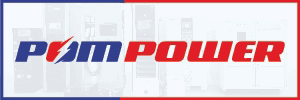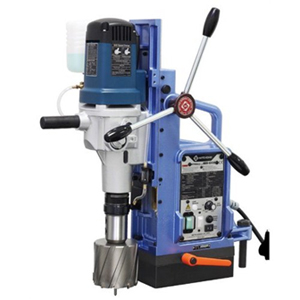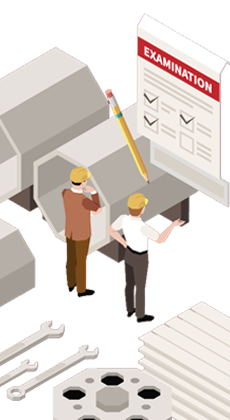Schedule a Call Back
Controlling industrial pollution
 Technical Articles
Technical Articles- Oct 01,16

Air pollution and its damaging effect is not someone else’s problem: we all are responsible for causing it and it is our responsibility to help clean it up.
Air pollution as we understand the term is “the introduction of particulates, biological molecules, or other harmful materials into the Earth’s atmosphere, causing diseases, allergies, death to humans, damage to other living organisms such as animals and food crops, or the natural or built environment’ (source: Wikipedia).
Growing automobilisation and inefficient combustion in engines powering the large number of automobiles has added in no small measure to the atmospheric pollution, especially in urban areas. In this context, it may be noted that it was post World War-II Los Angeles that first faced the problem of air pollution due to automobiles in the early 1950s, the kind of which cities like Beijing and even Delhi faced recently. The State of California in the US is well known for its stringent pollution control measures, which are stricter than the US Federal standards.
This article concerns industrial pollution, described as the contamination of the environment by businesses, particularly plants and factories that dump waste products into the air and water. Industrial waste is one of the largest contributors to the global pollution problem endangering people and the environment.
According to scientists, the top ten substances causing air pollution are: Particulates; Sulphur dioxide; Carbon monoxide; Carbon dioxide; Nitrogen oxides; Volatile organic compounds (VOCs); Ozone (the ozone layer and its depletion); Chlorofluorocarbons (CFCs); Unburned hydrocarbons; and Lead and heavy metals.
With stringent regulations in varying degrees adopted globally by different countries, India too is now introducing progressive legislation, be it for vehicular or industrial pollution.
While clean fuel, more efficient engines and use of catalytic converters are some of the measures that are used to control automobile pollution, there is a large number of products and technologies that are used for controlling industrial pollution for removal of particulate matters.
The control of particulate matter is an important aspect of industrial air pollution engineering. Particles are collected by a combination of several mechanisms. The six available mechanisms are gravitational settling, centrifugal impaction, inertial impaction, direct interception, diffusion and the electrostatic attraction.
Inertial Impaction: Large particles in gas stream have too much inertia to follow the gas streamlines around the impactor and are impacted on the impactor surface, while the small particles and the gas tend to diverge and pass around the interceptor, as a result coarse particles are collected.
Gravity Settling Chambers: This is a simple particulate collection device using the principle of gravity to settle the particulate matter in a gas stream passing through its long chamber. This requires a chamber in which the carrier gas velocity is reduced to allow the particulate matter to settle out of the moving gas stream under the action of gravity. This particulate matter is collected at the bottom of the chamber, which is cleaned manually to dispose the waste.
Cyclones: Settling chambers are not effective in removing small particles, so cyclones are used. The cyclone consists of a vertically placed cylinder, which has an inverted cone attached to its base. The particulate laden gas stream enters tangentially at the inlet point to the cylinder. The velocity of this inlet gas stream is then transformed into a confined vortex, from which centrifugal forces tend to drive the suspended particles to the walls of the cyclone. The vortex turns upward after reaching at the bottom of the cylinder in a narrower inner spiral. The clean gas is removed from a central cylindrical opening at the top, while the dust particles are collected at the bottom in a storage hopper by gravity.
Electrostatic Precipitators: Electrostatic precipitators (ESP) are particulate collection devices that use electrostatic force to remove the particles less than 5 micron in diameter. It is difficult to use gravity settlers and cyclones effectively for the said range of particles. Particles as small as one-tenth of a micrometer can be removed with almost 100% efficiency using electrostatic precipitators. The principle behind all electrostatic precipitators is to give electrostatic charge to particles in a given gas stream and then pass the particles through an electrostatic field that drives them to a collecting electrode.
Scrubbers: Scrubbers are devices that remove particulate matter by contacting the dirty gas stream with liquid drops. Generally water is used as the scrubbing fluid. In a wet collector, the dust is agglomerated with water and then separated from the gas together with the water.
Fabric Filters/Bag Houses: Fabric filtration is one of the most common techniques to collect particulate matter from industrial waste gases. The use of fabric filters is based on the principle of filtration, which is a reliable, efficient and economic methods to remove particulate matter from the gases. The air pollution control equipment using fabric filters are known as bag houses.
A bag house or a bag filter consists of numerous vertically hanging, tubular bags, 4 to 18 inches in diameter and 10 to 40 feet long. They are suspended with their open ends attached to a manifold. The number of bags can vary from a few hundreds to a thousand or more depending upon the size of the bag house. Bag houses are constructed as single or compartmental units. In both cases, the bags are housed in a shell made of rigid metal material.
Comparison of major particulate removal technologies
While all the developing countries in the world are bringing in stringer norms to control industrial air pollution for protecting mankind, India is not much lagging behind. In 2015, the Industrial Pollution Norms in India were further tightened, and the particulate Emission Parameters in respect of Thermal Power Plants has been revised as under:
>> TPPs (units) installed before 31st December 2003: 100 mg/Nm3
>> TPPs (units) installed after 31st December 2003 and up to 31st December 2016: 50 mg/Nm3
>> TPPs (units) to be installed from 1st January 2017: 30 mg/Nm3
>> The norms are revised for other industries as well.
For new installations, to limit the emission below 30 mg/Nm3, the trend is shifting towards Bag Houses, from ESP. This change shall call for more discipline in operation and maintenance approach. The cost of operation and maintenance shall increase substantially and has to be accounted for in the estimate/budget. However, ESP may continue to dominate the applications like – Sinter Waste Gas cleaning, LD/BF Gas cleaning with wet EPs and Coke Oven gas cleaning with ETPs.
In cases of existing installations, where improvement of emission is called for the industries would like to retrofit the for economy and space restrictions. The issue need to be examined in case-to-case basis. In case of marginal improvement need, modern electricals and controls may be useful. However, the internal health of the ESP has to be good. In case of a need for substantial improvement and wide range of variation in the inlet condition, the possibility of conversion of the ESP to a suitable hybrid filter may be explored. Complete conversion of an existing ESP to a multi-module Bag House with on-line maintenance facility may be a good option for large units.
Kolkata-based Air Control Engineering Pvt Ltd, a professionally managed company, is engaged in offering various solutions for industrial air pollution control. The company handles turnkey projects for air pollution control and provides industrial air handling systems, e.g. electrostatic precipitators (ESP), bag filters, cage vents, industrial fans and other auxiliaries.
The company has the knowledge and expertise of optimum solutions related to gas cleaning and handling systems. It also has the expertise and credentials in supply of these equipment, refurbishing existing equipment to achieve improved parameters, supply spares, and develop substitute spares for various other makes. Besides, it also provides services including annual maintenance and troubleshooting, inspection as well as consultancy in above field.
The main products/technologies offered by the company are:
Electrostatic Precipitators – An Electrostatic Precipitator (ESP) is a device which removes particles from a gas stream. It accomplishes particle separation by use of an electric field.
Bag Filters – Bag filters (Bag houses) are fabric collectors that use filtration to separate dust particulates from dusty gases. Bag filter is typically used in applications requiring gross particulate removal with very low emission.
Cage Vents – Coal Grinding and various Storage Systems should be essentially protected against explosions and their highly hazardous consequences. Protection can theoretically be made by safe process conditions, viz., low oxygen content of the process air or purging inert gas like nitrogen, and by installing safety techniques like explosion venting, in other words, cage vent.
Industrial Fans – These fans handle air/gas over a wide range of temperature, composition and dust content, moving air/gas across system resistance.
– R K SIKDAR
(The author is Managing Director, Air Control Engineering Pvt Ltd, Kolkata. Tel: 033-30285269-72. Fax: 91-33-30285273. Email: airoto@aircontrolengineering.com, airoto@hotmail.com)
Related Stories

Mitsubishi Heavy Industries reports record FY2024; Issues strong FY2025 outlook
Strong performance was led by the Energy Systems segment, particularly Gas Turbine Combined Cycle (GTCC) and Aero Engines, both of which saw substantial demand and improved margins.
Read more
BrahMos missile factory to be inaugurated in Lucknow on May 11
The BrahMos missile is produced by BrahMos Aerospace, a joint venture between India and Russia. The inauguration comes at a time of heightened military tensions with Pakistan, marked by cross-border..
Read more
India and Chile Sign Terms of Reference for CEPA negotiations
The CEPA aims to build upon the existing PTA between the two nations and seeks to encompass a broader range of sectors, including digital services, investment promotion and cooperation, MSME, critic..
Read moreRelated Products

Delvo Screwdrivers
Pneumec Kontrolls offers a wide range of Delvo screwdrivers. Delvo screwdrivers, made by Nitto Kohki, are well-regarded electric screwdrivers used in industrial and assembly line settings. Here are Read more

Togawa Paint Hoses
Pneumec Kontrolls offers a wide range of Togawa paint hoses.

Silent Wide Range Linear Slides -QW Series
IBK Engineers Pvt Ltd offers a wide range of silent wide range linear slides - QW Series










